Load a test DataFrame:
df = pd.DataFrame({'year': [2019] * 5,
'month': [8] * 5,
'day': [16] * 5,
'hour': [12, 12, 12, 12, 13],
'minute': [1, 2, 3, 4, 5]})
df = pd.DataFrame(pd.to_datetime(df), columns=['Time_Stamp'])
df['Event_Master'] = [0, 0, 1, 0, 1]
Loaded DataFrame looks like:
Time_Stamp Event_Master
0 2019-08-16 12:01:00 0
1 2019-08-16 12:02:00 0
2 2019-08-16 12:03:00 1
3 2019-08-16 12:04:00 0
4 2019-08-16 13:05:00 1
To solve the problem, I first add a temporary column called 'Next_Timestamp' which at first just grabs the timestamp when given event is a 1. It is pd.NaT otherwise. We can then use the fillna method to backfill the pd.NaT values with the time of the next event for each row. It now contains the time of the next event for each row. Finally, we just subtract the 'Time_Stamp' column from the 'Next_Timestamp' column.
df['Next_Timestamp'] = df[df.Event_Master == 1].Time_Stamp
df['Next_Timestamp'].fillna(method='backfill', inplace=True)
df['TimeDiff'] = df.Next_Timestamp - df.Time_Stamp
The DataFrame now looks like:
Time_Stamp Event_Master Next_Timestamp TimeDiff
0 2019-08-16 12:01:00 0 2019-08-16 12:03:00 00:02:00
1 2019-08-16 12:02:00 0 2019-08-16 12:03:00 00:01:00
2 2019-08-16 12:03:00 1 2019-08-16 12:03:00 00:00:00
3 2019-08-16 12:04:00 0 2019-08-16 13:05:00 01:01:00
4 2019-08-16 13:05:00 1 2019-08-16 13:05:00 00:00:00
Finally, drop the temporary 'Next_Timestamp' column:
df.drop(['Next_Timestamp'], axis=1, inplace=True)
And the final DataFrame looks like:
Time_Stamp Event_Master TimeDiff
0 2019-08-16 12:01:00 0 00:02:00
1 2019-08-16 12:02:00 0 00:01:00
2 2019-08-16 12:03:00 1 00:00:00
3 2019-08-16 12:04:00 0 01:01:00
4 2019-08-16 13:05:00 1 00:00:00
Repeat for other columns as needed. Hope this helps!

